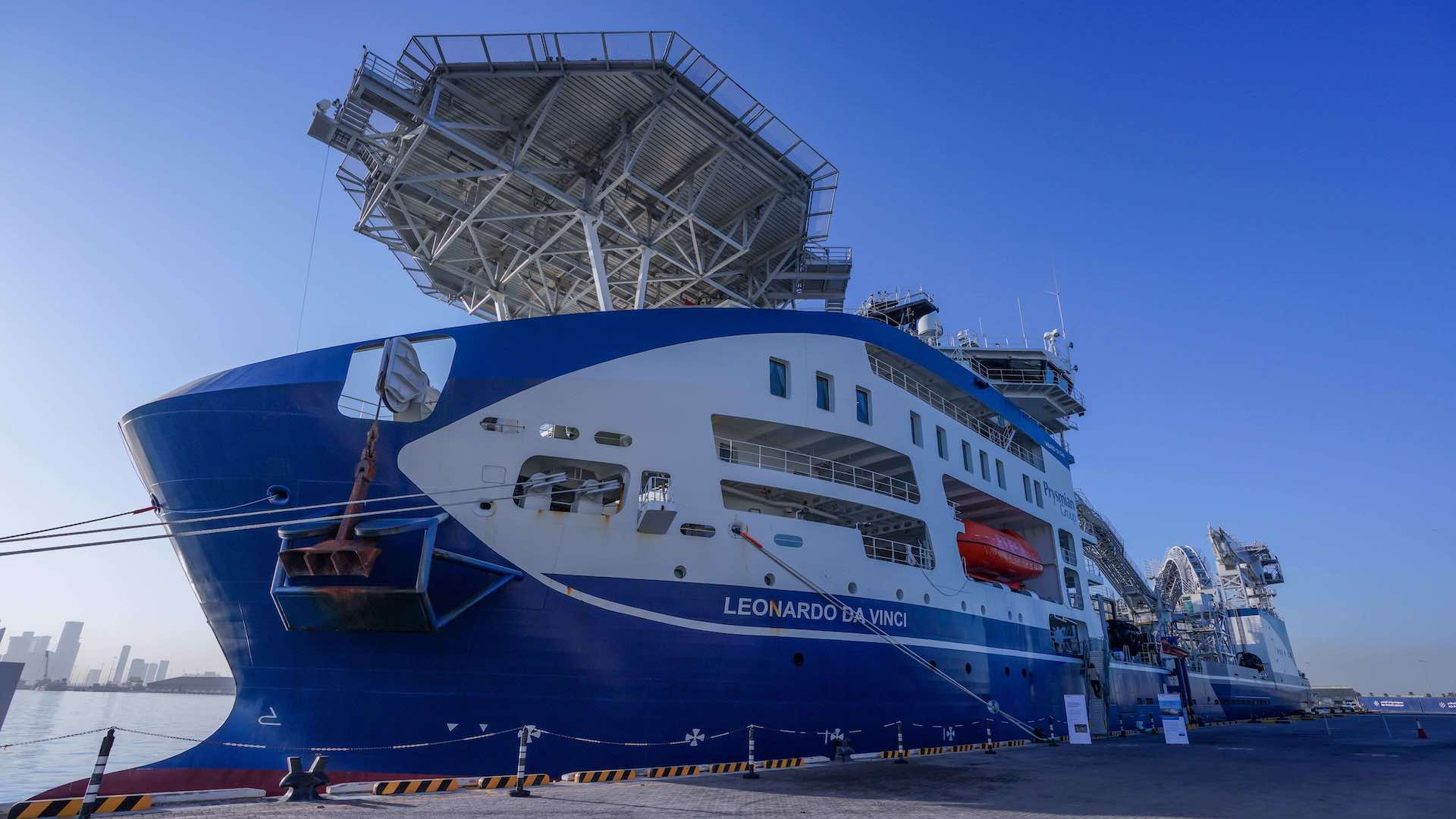ADNOC’s offshore electrification targets 50% carbon cut
The world’s most extensive and cutting-edge power cable-laying vessel has embarked on a groundbreaking endeavor, the $3.8 billion (AED13.95 billion) collaborative project between ADNOC and Abu Dhabi National Energy Company PJSC (TAQA). The objective: to power and significantly decarbonize ADNOC’s offshore production operations.

In an innovative move, the project will usher in a high-voltage, direct current (HVDC) subsea transmission system, a first in the Middle East and North Africa (MENA) region. This pioneering system will supply ADNOC’s offshore production operations with cleaner and more efficient energy, all facilitated by TAQA’s wholly-owned subsidiary, Abu Dhabi Transmission and Despatch Company (TRANSCO), through the Abu Dhabi onshore power grid.
This ambitious undertaking calls for approximately 1,000 kilometers (km) of HVDC cables integrated with fiber optics. The transmission system’s total installed capacity will reach an impressive 3.2 Gigawatts (GW). It comprises two independent sub-sea HVDC links and converter stations. The cable-laying vessel responsible for this monumental task is none other than the Leonardo da Vinci, owned by the Prysmian Group. Having made the journey from Europe to the UAE, it will operate for an initial four-month period.
Spanning from Mirfa on the western Abu Dhabi coastline to the offshore Zakum cluster, a distance equivalent to the stretch between Abu Dhabi and Dubai, the Leonardo da Vinci will first lay bundled cabling along a 134km route before returning to complete a second 141km route. Commercial operations for this offshore electrification endeavor are slated to kick off in 2025.
This initiative is projected to reduce ADNOC’s offshore operations’ carbon footprint by up to 50%, replacing existing offshore gas turbine generators with more sustainable power sources available on the Abu Dhabi onshore power network. An impressive aspect of this venture is that more than 50% of its value will contribute to the UAE’s economy through ADNOC’s In-Country Value (ICV) program.
Originally announced in December 2021, the project is funded through a special purpose vehicle (SPV), jointly owned by ADNOC and TAQA (30% stake each), with a consortium consisting of Korea Electric Power Corporation (KEPCO), Japan’s Kyushu Electric Power Co., and Électricité de France (EDF). KEPCO leads the consortium, holding a combined 40% stake in the project on a build, own, operate, and transfer basis.
ADNOC’s commitment to electrification extends across its operations. In January 2022, ADNOC made history by becoming the first major oil and gas company to source all its onshore grid power from solar and nuclear clean energy through a partnership with Emirates Water and Electricity Company (EWEC). This partnership led to a substantial reduction of around 4 million tonnes of greenhouse gas (GHG) emissions in 2022. ADNOC is on a fast track to decarbonize its operations, allocating $23 billion (AED84.4 billion) to low-carbon solutions and decarbonization technologies as part of its ambitious goal to achieve net-zero emissions by 2045.
Since December 2021, TAQA has been actively pursuing several major HVDC projects in alignment with its growth targets for 2030 in expanding its Transmission and Distribution business. Notably, in December 2023, TAQA signed a memorandum of understanding to explore the possibility of becoming one of the shareholders in a project to develop a 900 km high-voltage direct current electricity interconnector project between Greece and Cyprus.
Prior to that, TAQA announced a strategic MoU for a feasibility study of an HVDC infrastructure project in Romania. In early 2023, TAQA invested GBP25 million (AED113 million) into Xlinks First Limited, a company dedicated to laying the world’s longest HVDC subsea cables between the UK and Morocco to transport renewable power to the UK.
